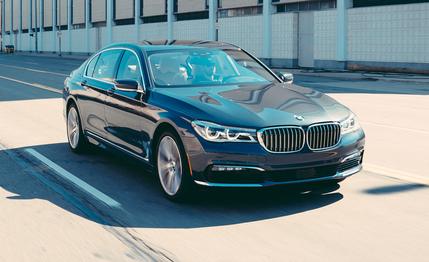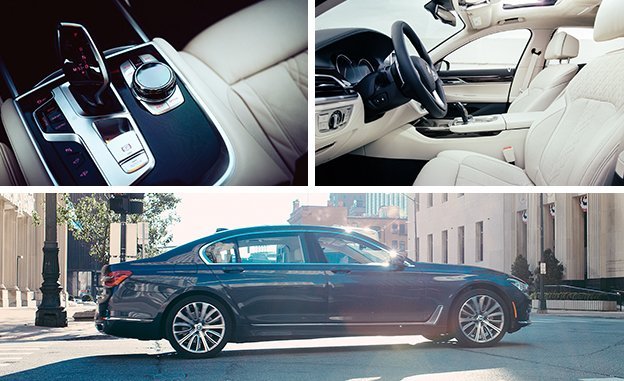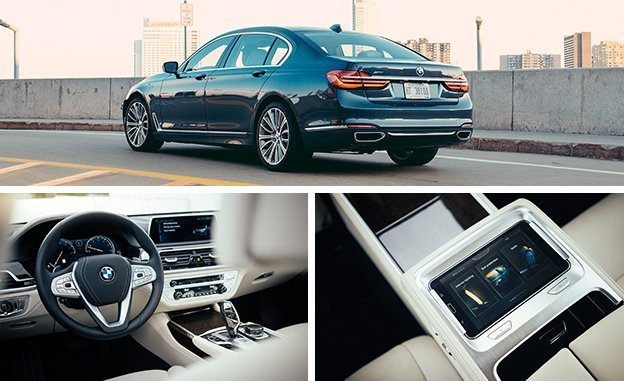
 Instrumented Test
From the December 2015 issue
Instrumented Test
From the December 2015 issue
Never mind what you think you see here. This is not a car as we know it. Yes, you can drive it—or it can drive for you during your 15-second catnap. It will perfume the air you breathe and draw the shades if the sun is too bright. It can recline your seat, clear the space ahead, and deploy an ottoman. Approach the car and it’ll roll out what BMW calls a “Light Carpet,” an LED-projected runway welcoming you. It’ll remind you of speed limits, but wouldn’t dare suggest you obey them. And when you reach your destination, it will park for you, or just act as spotter if you prefer to do it yourself. It’ll even stomp on the brakes if you don’t see an obstacle and get too close. The new BMW 7-series isn’t just a car. It’s a concierge, a four-wheeled passe-partout.
Here, in the concierge class, luxury means something more than just highly adjustable and supremely comfortable ventilated leather seats, which, of course, this 750i xDrive has in both the front and rear. Or a high-end stereo system, which in this case is a Bowers & Wilkins with 1400 watts and 16 speakers that include Kevlar midranges and “diamond tweeters with Nautilus technology,” a description that probably took longer to write than it takes to manufacture lesser speakers. BMW chief designer Karim Habib says modern luxury means “offering the customer what they want before they know they want it.”
“Where to this morning, boss? And will you need that jacket pressed?”Which is why, like any proficient attendant, the 7-series now responds to hand gestures such as waves, points, and impatient finger twirls. A dismissive flick of the wrist ignores incoming calls. Pointing at the infotainment screen accepts them. Twirling your finger clockwise in front of the screen turns up the volume; counterclockwise turns it down. A two-fingered point can be programmed to do any number of things: set a specific destination, play “After All” by Cher and Peter Cetera from a connected phone, play other songs less terrible.

 Any buttons that look like metal actually are. They're cool when it's cold out, warm when it's hot, and they'll melt your fingerprints during summertime in Arizona. The ceramic trim on the iDrive, HVAC, and stereo knobs is part of the $3200 Executive package.
Any buttons that look like metal actually are. They're cool when it's cold out, warm when it's hot, and they'll melt your fingerprints during summertime in Arizona. The ceramic trim on the iDrive, HVAC, and stereo knobs is part of the $3200 Executive package.
Where Habib sees a luxury feature, we see a gimmick. But if you don’t like Gesture Control, you don’t have to use it. With the addition of touch-screen control and an optional tablet between the rear seats, there are now five ways to interact with the 7-series’s iDrive infotainment system (the knob and voice commands being the other two). The race to incorporate mind control is on, however our bet is on dark horse—or would that be space horse?—Tesla.
Few earthbound vehicles boast such diverse and high-tech construction as the new 7-series, with the 2016 model representing the auto industry’s most mainstream application yet of structural carbon fiber [see “Material Girl”]. BMW says it trimmed 88 pounds from the 7’s unibody, and the example tested here weighed 4883 pounds, more than 100 pounds lighter than the previous-generation 750i xDrive we had for a long-term test.
All the major suspension components are adjustable. Air springs tweak the ride height based on load, speed, and vehicle setting. Adjustable dampers and anti-roll bars vary the ride between soft and firm. The newly available Active Comfort Drive with Road Preview adjusts chassis systems according to data drawn from the navigation system. Not even the rear-wheel toe angle is fixed, as BMW’s rear steering is available for the first time with four-wheel drive. But within the panoply of settings, modes, and choices, is there one that delivers the sensations we expect of a BMW?


Yes. Sort of. Depending on the suspension mode—comfort plus, comfort, or sport—it can be a Rolls, a Benz, or a BMW. Comfort plus, the squishiest, allows for surprising float, with the car leaning wildly in turns. We can’t imagine many roundel loyalists engaging that one, but it might ease the transition for any unfortunates forced to downgrade from BMW’s super-lux British subsidiary. Comfort mode can still rock a baby to sleep but is unlikely to induce seasickness. Sport is the true BMW setting, nicely balancing control with comfort. In it, suspension and body motions are firmly damped, but without an overly sporting edge. This is, after all, a car with an optional rear-seat package aimed at chauffeured buyers. The Jaguar XJ and even the Audi A8 are firmer, but we question to what extent buyers at this price point need their long-wheelbase sedan to behave like the M3 they park next to.
And either way, 0.88 g on the skidpad is respectable for a vehicle that can indulge in such un-BMW behavior in comfort-plus mode. The steering is responsive and linear but light on feel, which engineers tell us is intentional. We enthusiasts might think the 7 should be an XXXL M235i, but the people who buy them think otherwise, finding bothersome the little twitches and tugs emblematic of good steering. And if the car feels closer to a Mercedes S-class than any BMW, maybe that’s because the S-class outsells the 7-series two to one. If you can’t beat ’em, join ’em, correct? But BMW has always provided good brakes, and whether it’s the driver who slams on them or the car’s computer, the 750i stops from 70 mph in just 161 feet—impressive considering its mass. The pedal is progressive, but rather soft.